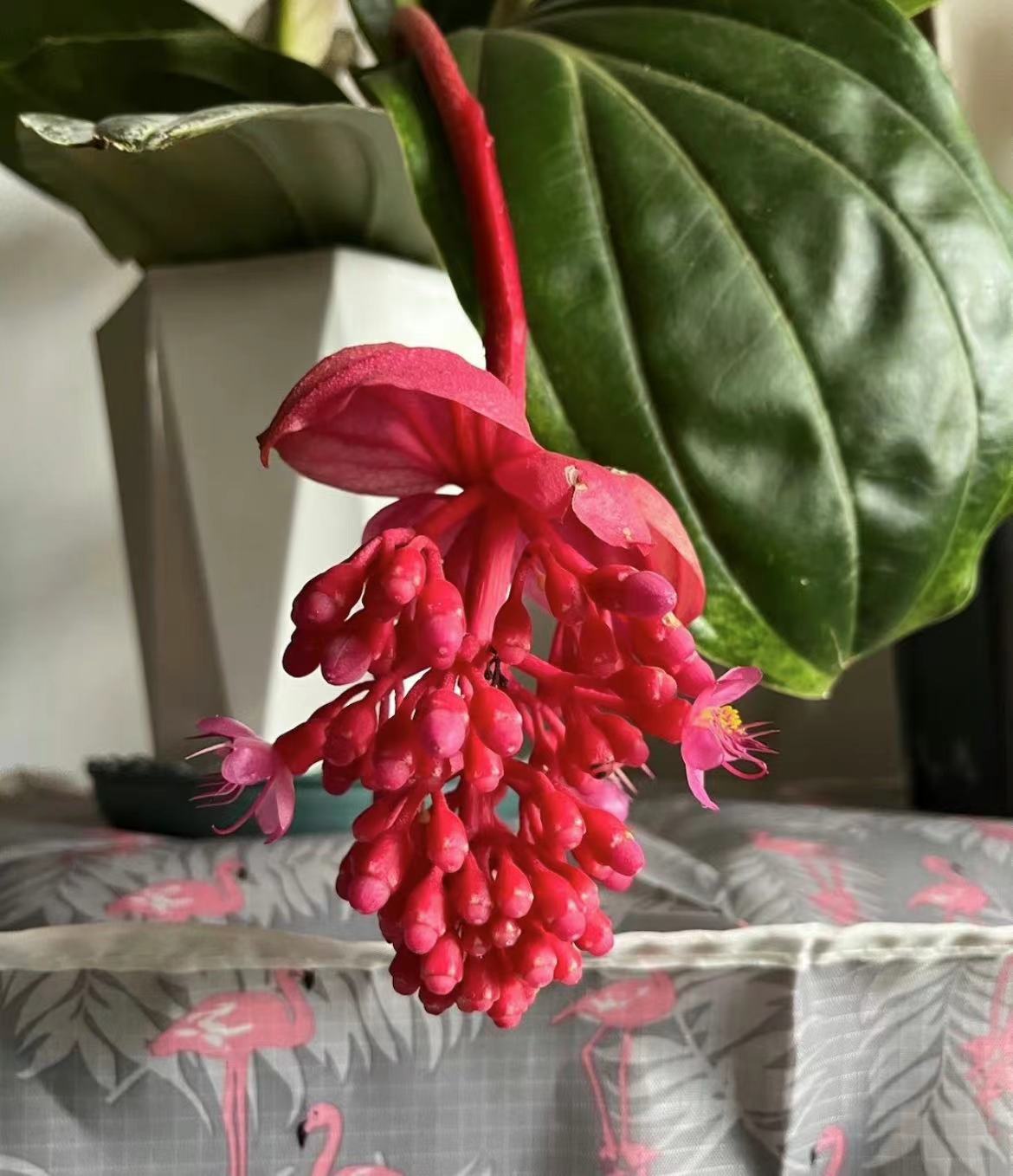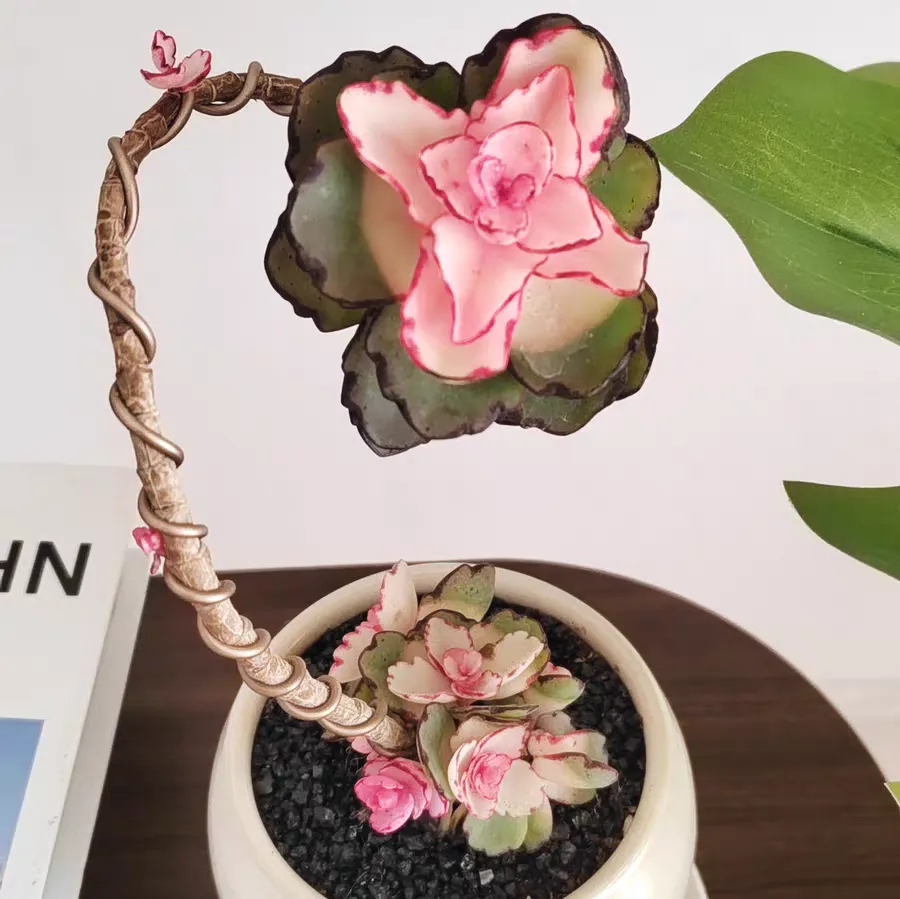Medinilla magnifica, also known as Medinilla speciosa, is a highly ornamental flower. In terms of appearance, the flower of Medinilla magnifica has a unique shape, just like a gorgeous lotus lantern. The huge pink bud hangs down, and the layers of petals wrap the stamen. The plant of Medinilla magnifica is relatively tall, and the leaves are green and lustrous, setting off the beauty of the flower even more.
The difficulty of Medinilla magnifica blooming is affected by multiple factors.
First of all, the growth environment is crucial. Medinilla magnifica is native to tropical regions and likes a warm, humid, and properly lit environment. If the growth environment is too low or too high in temperature, too dry, or lacks sufficient light, it may affect its blooming. For example, when the temperature is lower than 15℃ or higher than 30℃, the growth of Medinilla magnifica will be inhibited, and blooming naturally becomes difficult.
Whether the maintenance method is proper also plays a decisive role. Reasonable operations such as watering, fertilizing, and pruning are crucial for the blooming of Medinilla magnifica. Excessive watering will lead to root rot, while too little watering will cause the plant to lack water and affect growth and blooming. Improper fertilization, such as excessive fertilization or using inappropriate fertilizers, may also cause harm to Medinilla magnifica and hinder blooming. And irregular pruning can promote branching and the formation of flower buds.
The growth period of Medinilla magnifica will also affect blooming. Generally speaking, Medinilla magnifica needs to go through a certain growth period to reach the blooming condition. Usually, it may take two to three years or even longer from seedling to blooming.
Autumn is a critical period for the growth of Medinilla magnifica. Here are some maintenance methods for autumn:
Temperature control
As the temperature gradually drops in autumn, the suitable growth temperature for Medinilla magnifica is 18℃ - 25℃. In autumn, pay close attention to temperature changes and move Medinilla magnifica to a warm place indoors in time to avoid being affected by cold weather. Especially in northern regions, where the night temperature is low, take good insulation measures. You can use equipment such as insulation film or heaters.
Light management
The sunlight in autumn is relatively mild. Medinilla magnifica needs sufficient light for photosynthesis. You can place Medinilla magnifica on a sunny windowsill or balcony, but avoid direct sunlight to prevent burning the leaves. If there is insufficient indoor light, artificial light sources such as plant growth lamps can be used for supplementation.
Appropriate watering
In autumn, the growth rate of Medinilla magnifica gradually slows down, and the demand for water is correspondingly reduced. Watering should be appropriate to keep the soil moist but not waterlogged. The watering frequency can be determined according to the dryness and wetness of the soil. Generally, watering once or twice a week is sufficient. At the same time, be careful not to water at high noon temperatures to avoid irritating the roots.
Reasonable fertilization
Autumn is a period for Medinilla magnifica to accumulate nutrients. Reasonable fertilization can lay a good foundation for its growth and blooming. You can choose fertilizers rich in phosphorus and potassium elements, such as potassium dihydrogen phosphate, and apply fertilizer once every two weeks or so. When fertilizing, pay attention to not having too high a concentration to avoid burning the roots.
Pruning and shaping
In autumn, Medinilla magnifica can be properly pruned and shaped to remove diseased branches, weak branches, and overly long branches to maintain the beauty of the plant and good ventilation. After pruning, you can apply fungicides such as carbendazim to the wounds to prevent infection.
It is somewhat difficult for Medinilla magnifica to bloom, but as long as a suitable growth environment and correct maintenance methods are provided, it is expected to enjoy its beautiful flowers. In autumn, according to the growth characteristics of Medinilla magnifica, do a good job in temperature control, light management, watering, fertilization, pruning, and pest control, so that Medinilla magnifica can thrive in autumn and prepare for blooming in the coming year.
Is it difficult for Medinilla magnifica to bloom?

Share with
Tagged in :




Leave a Reply